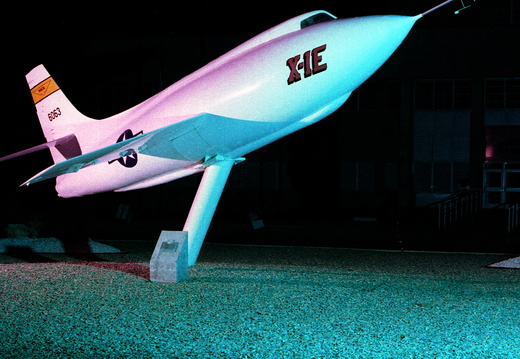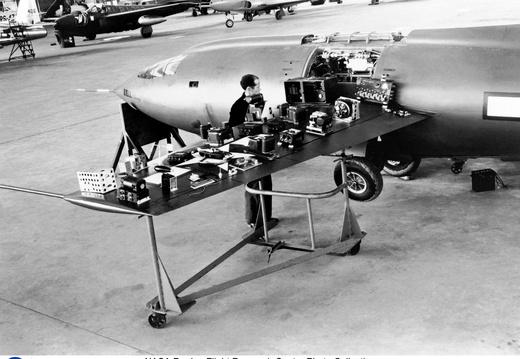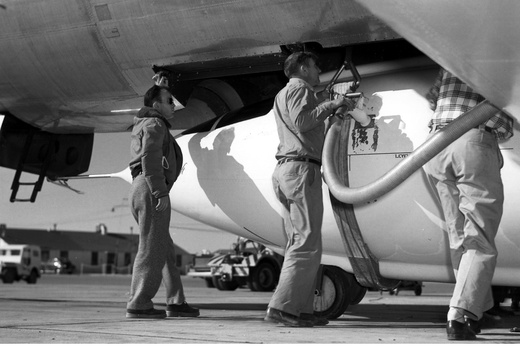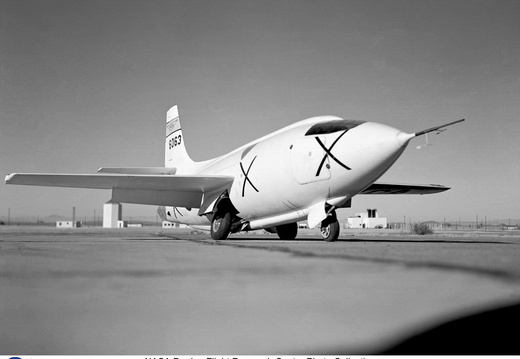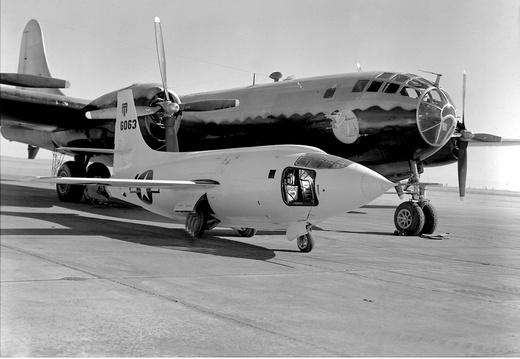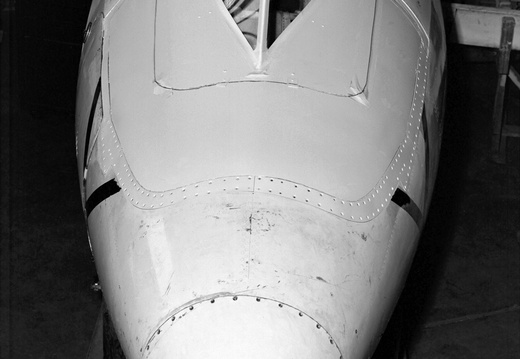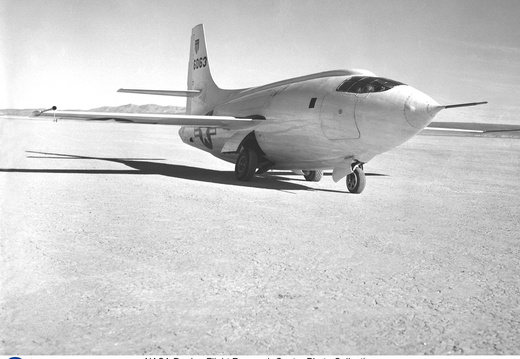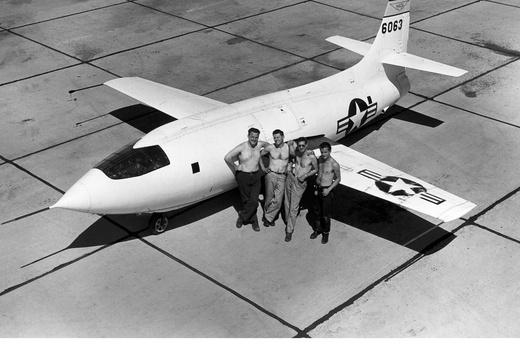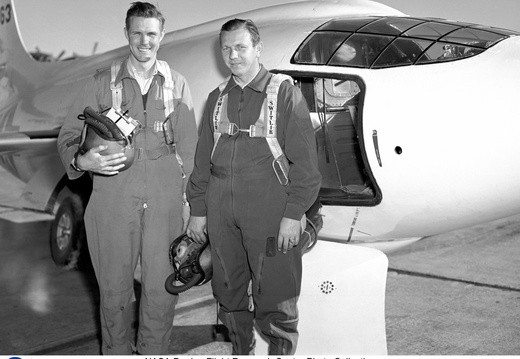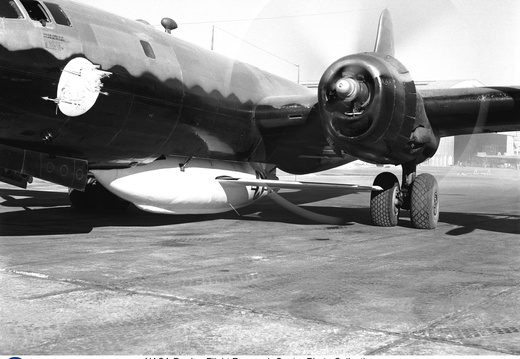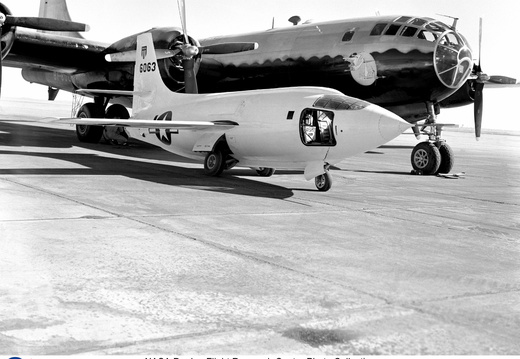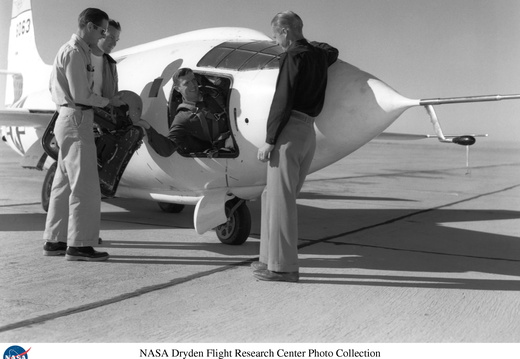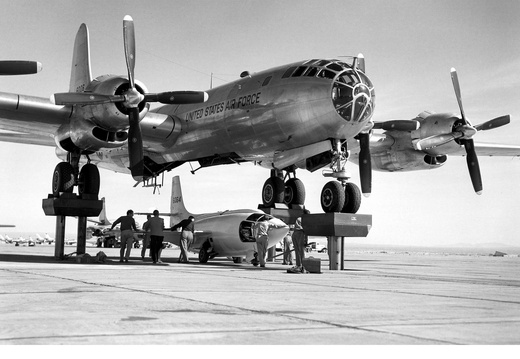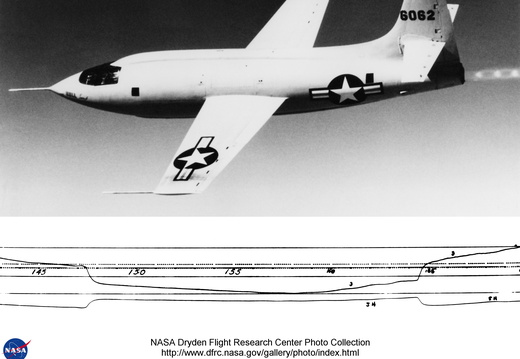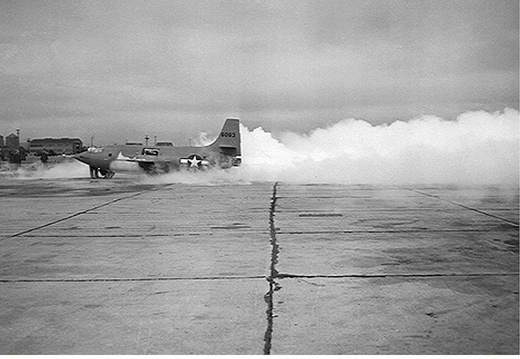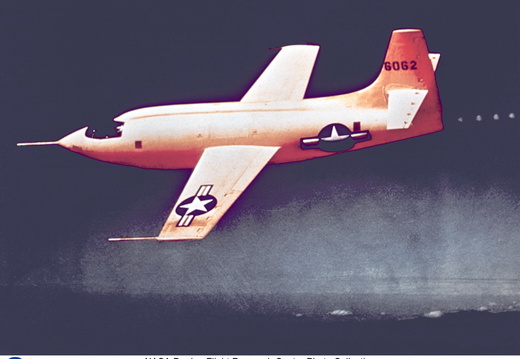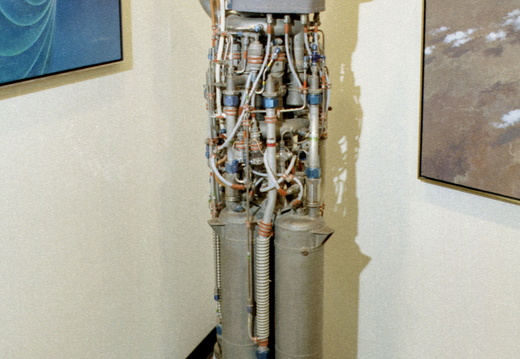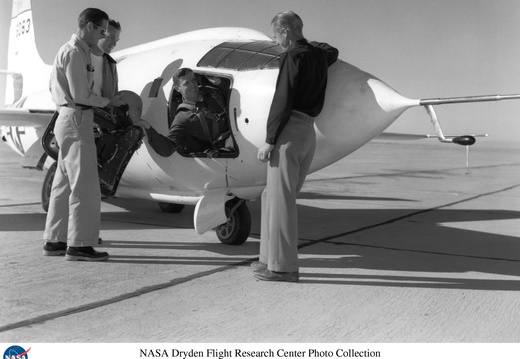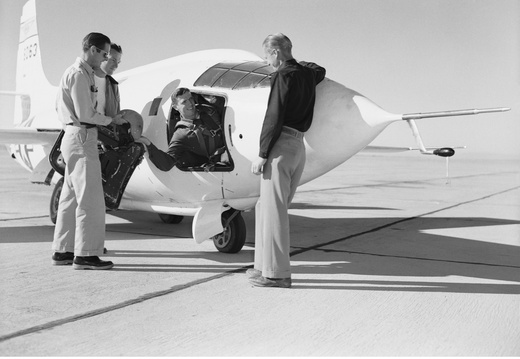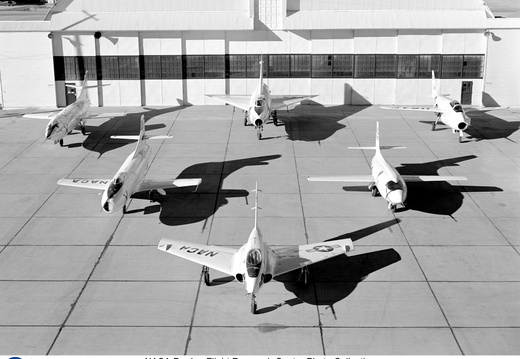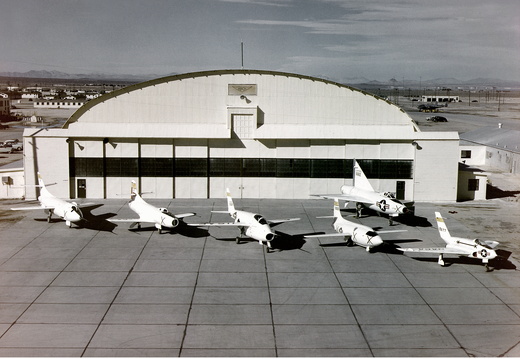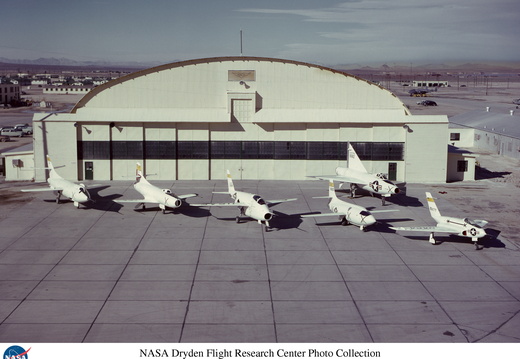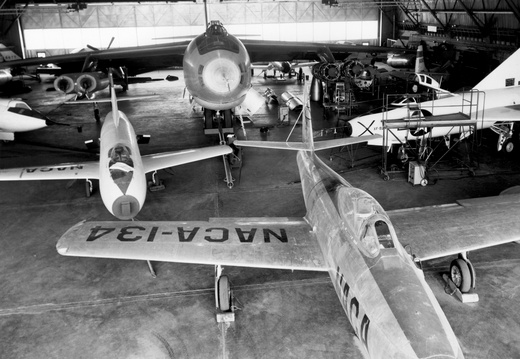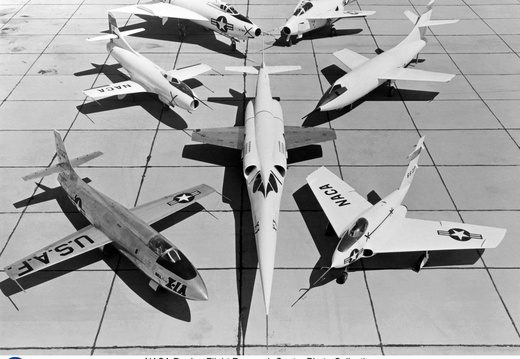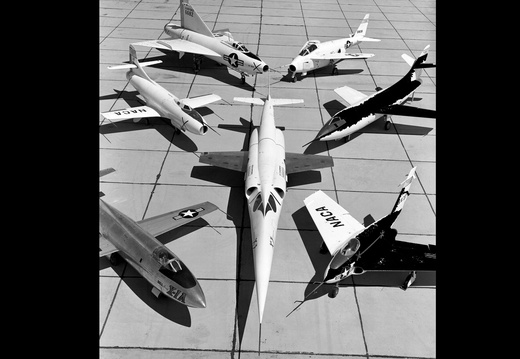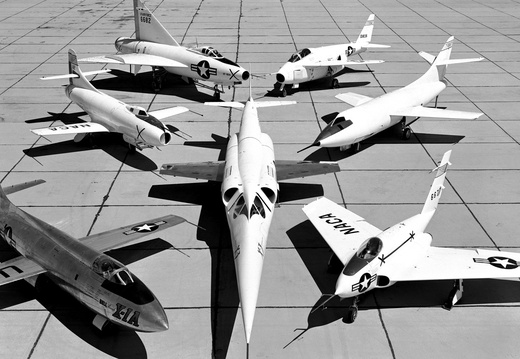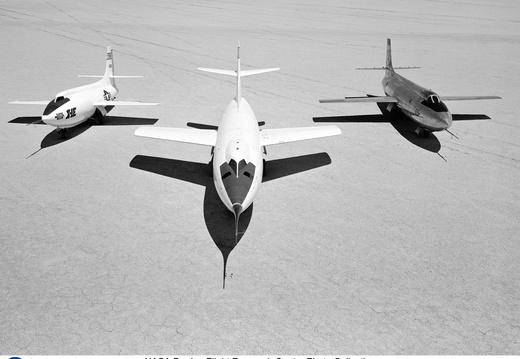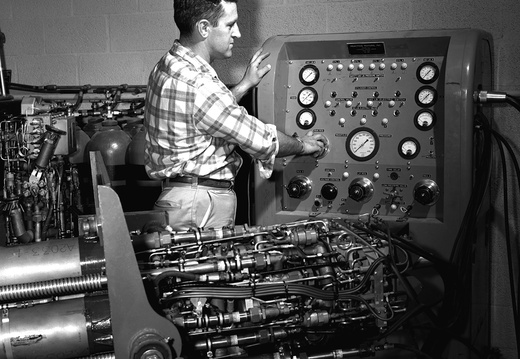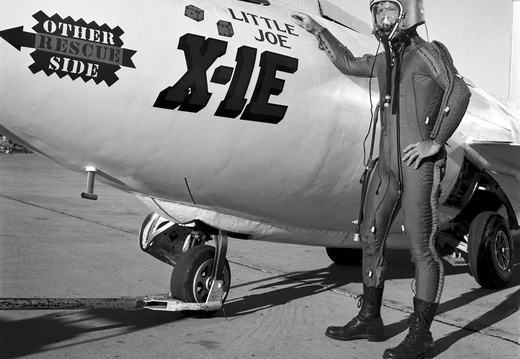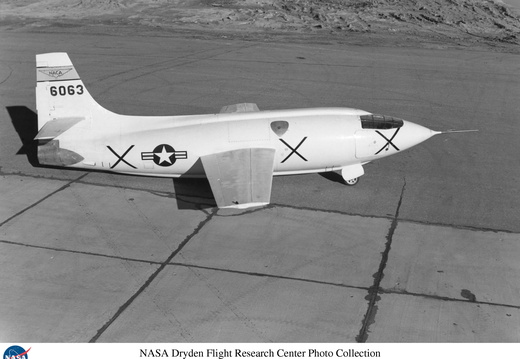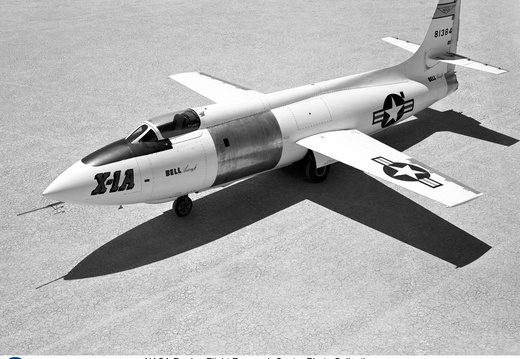
X-1A
The Bell X-1A was similar to the Bell X-1, except for having turbo-driven fuel pumps (instead of a system using nitrogen under pressure), a new cockpit canopy, longer fuselage and increased fuel capacity. The X-1A arrived at Edwards Air Force Base, California on January 7, 1953, with the first glide flight being successfully completed by Bell pilot, Jean "Skip" Ziegler. The airplane also made five powered flights with Ziegler at the controls. The USAF was attempting a Mach 2 flight and USAF test pilot Charles "Chuck" Yeager was eager. He reached speed of Mach 2.435, at a altitude of 75,000 feet on December 12, 1953, a speed record at the time. But all was not well, the aircraft encountered an inertial coupling phenomenon and went out of control. Once the X-1A had entered the denser atmosphere (35,000 feet) it slowly stabilized and Yeager was able to return to Edwards. The aircraft had experienced high-speed roll-coupling, something aerodynamicists had predicted, but this was the first actual encounter.
On August 26, 1954, Major Arthur Murray, USAF test pilot flew the X-1A to an altitude record of 90,440 feet. NACA High-Speed Flight Station received the aircraft in September 1954 and returned it to Bell for the installation of an ejection seat.
NACA test pilot Joseph Walker made a familiarization flight on July 20, 1955 followed by another scheduled flight on August 8, 1955. Shortly before launch the X-1A suffered an explosion. The extent of the damage prohibited landing the crippled aircraft. The X-1A was jettisoned into the desert, exploding and burning on impact. Walker and the B-29 crew returned to base in satisfactory condition. Four pilots had completed 29 flights (including aborts).
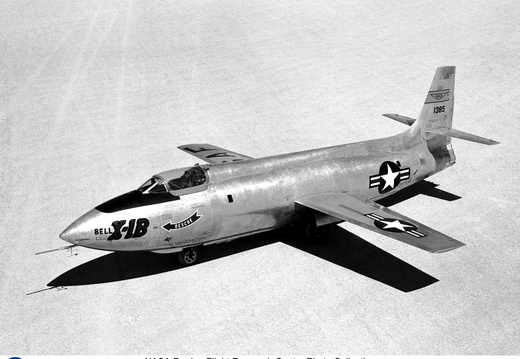
X-1B
The aircraft was fitted with special instrumentation for exploratory aerodynamic heating tests. It had over 300 thermocouples installed on it. The X-1B was the first aircraft to fly with a reaction-control system; a prototype of the reaction-control system used on the X-15 and other piloted test aircraft.
The X-1B was given to the Air Force Museum at Wright-Patterson Air Force Base Dayton, Ohio, on January 27, 1959, for preservation and display. This aircraft completed a total of 27 glide and powered flights by eight U.S. Air Force and two NACA test pilots. Second-generation X-1 aircraft were 35.8 feet long and had a wingspan of approximately 28 feet.
